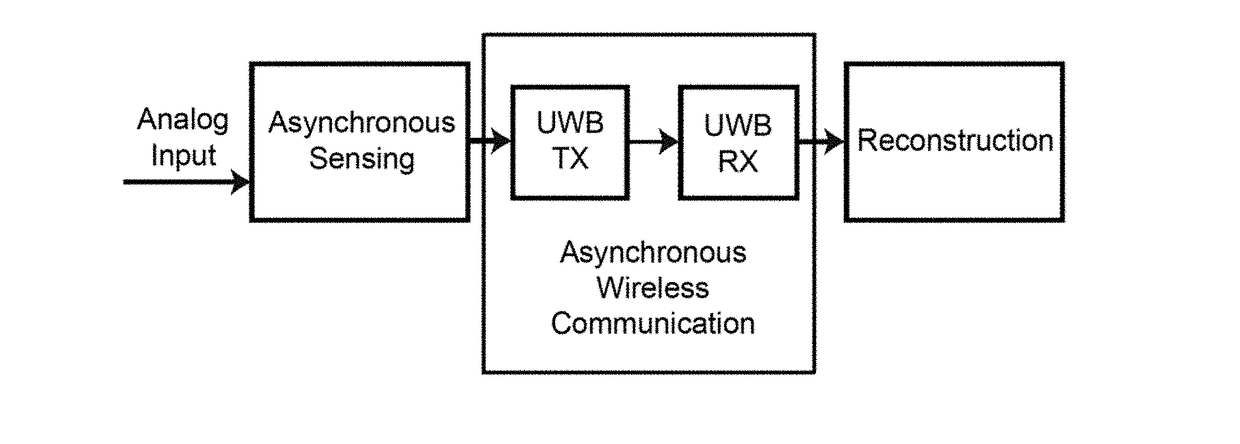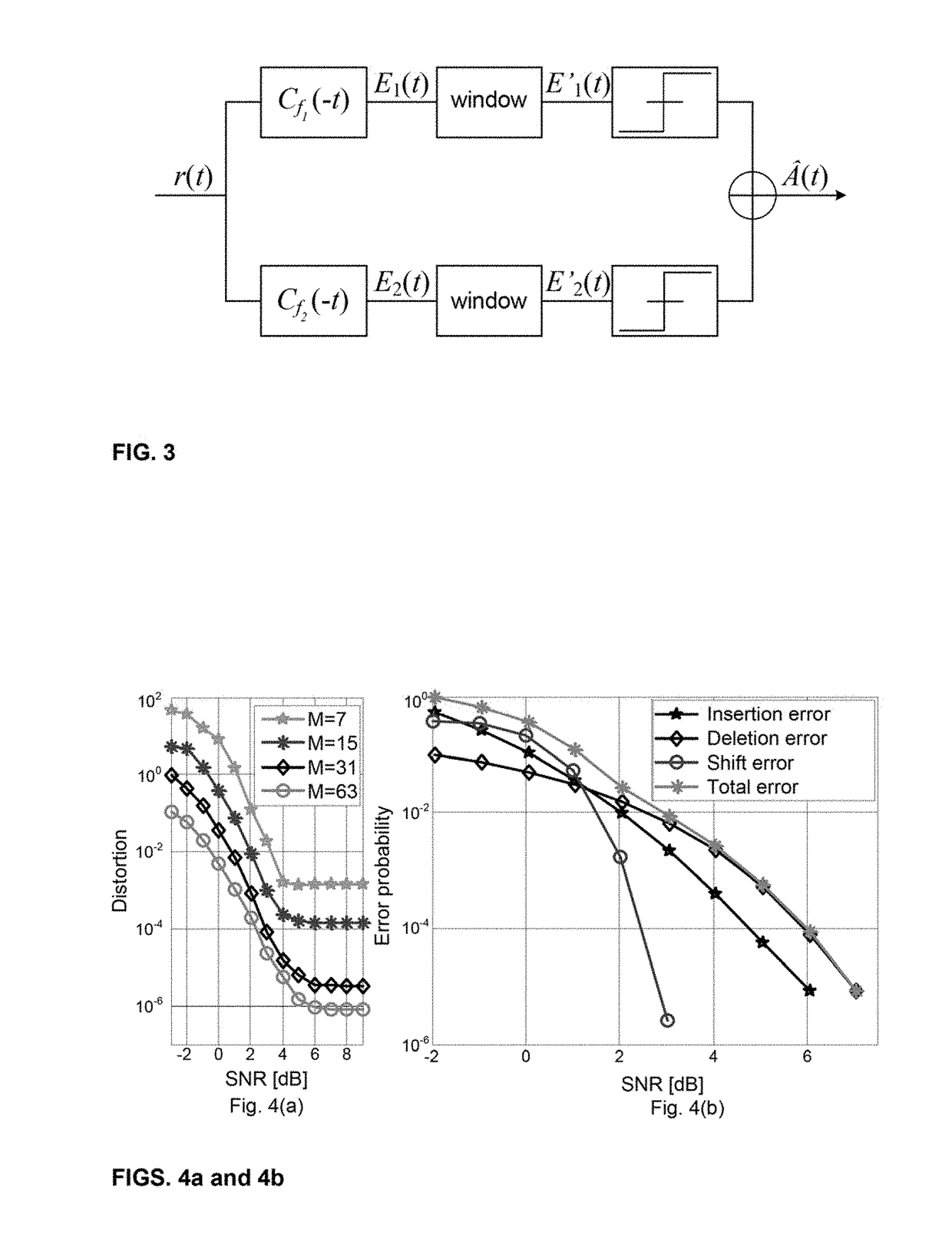Asynchronous wireless sensing
a wireless sensing and wireless sensor technology, applied in the direction of error detection/prevention using signal quality detectors, instruments, digital transmission, etc., can solve the problems of large amount of null data, large data rate increase, limited power constraint of sensors, etc., to achieve reliable communication, low peak power consumption, and low complexity
- Summary
- Abstract
- Description
- Claims
- Application Information
AI Technical Summary
Benefits of technology
Problems solved by technology
Method used
Image
Examples
Embodiment Construction
[0047]Wireless sensor networks are spatially distributed autonomous sensors to monitor, for example, physical or environmental conditions. The wireless sensor networks industry has been predicted to become a multibillion-dollar market in the next decade. Today, wireless sensor networks have been widely used in many mobile and embedded systems. Example applications include, but not limited to, military and security surveillance, industry and machine inspection, construction and building examination, environment and health monitoring, and the like. Wireless sensor networks are built of wireless sensor nodes. Each sensor node continuously senses an analog signal, converts the sensed signal into binary format digital data, and delivers the data wirelessly through radio transceivers to a processing device, such as a micro-controller. A limitation of such a wireless sensor is the high power consumption due to constant-interval sampling. This is because in most of applications, the input s...
PUM
 Login to View More
Login to View More Abstract
Description
Claims
Application Information
 Login to View More
Login to View More - R&D
- Intellectual Property
- Life Sciences
- Materials
- Tech Scout
- Unparalleled Data Quality
- Higher Quality Content
- 60% Fewer Hallucinations
Browse by: Latest US Patents, China's latest patents, Technical Efficacy Thesaurus, Application Domain, Technology Topic, Popular Technical Reports.
© 2025 PatSnap. All rights reserved.Legal|Privacy policy|Modern Slavery Act Transparency Statement|Sitemap|About US| Contact US: help@patsnap.com



